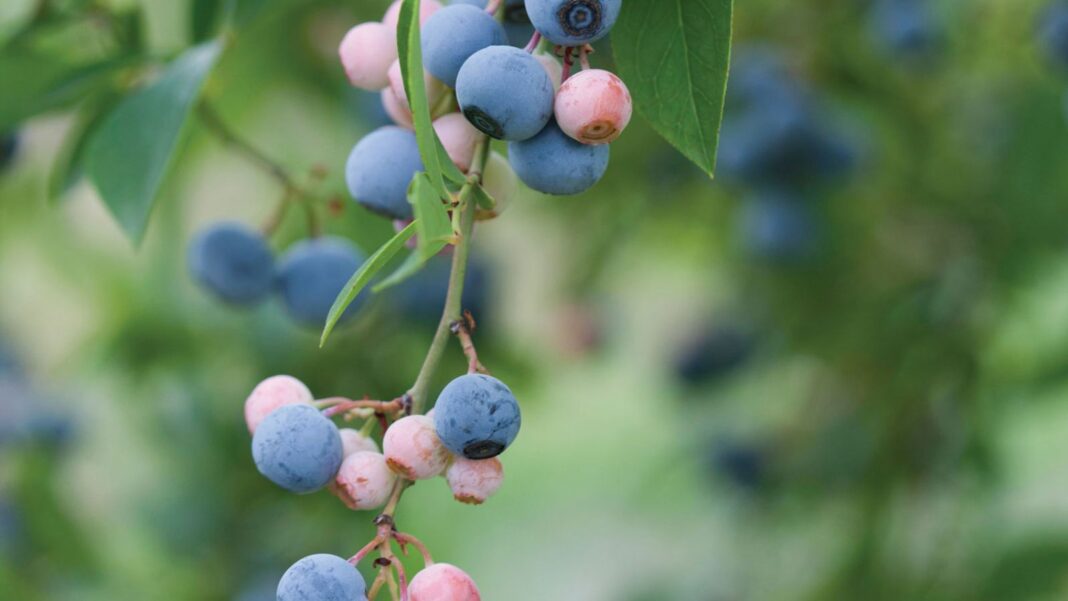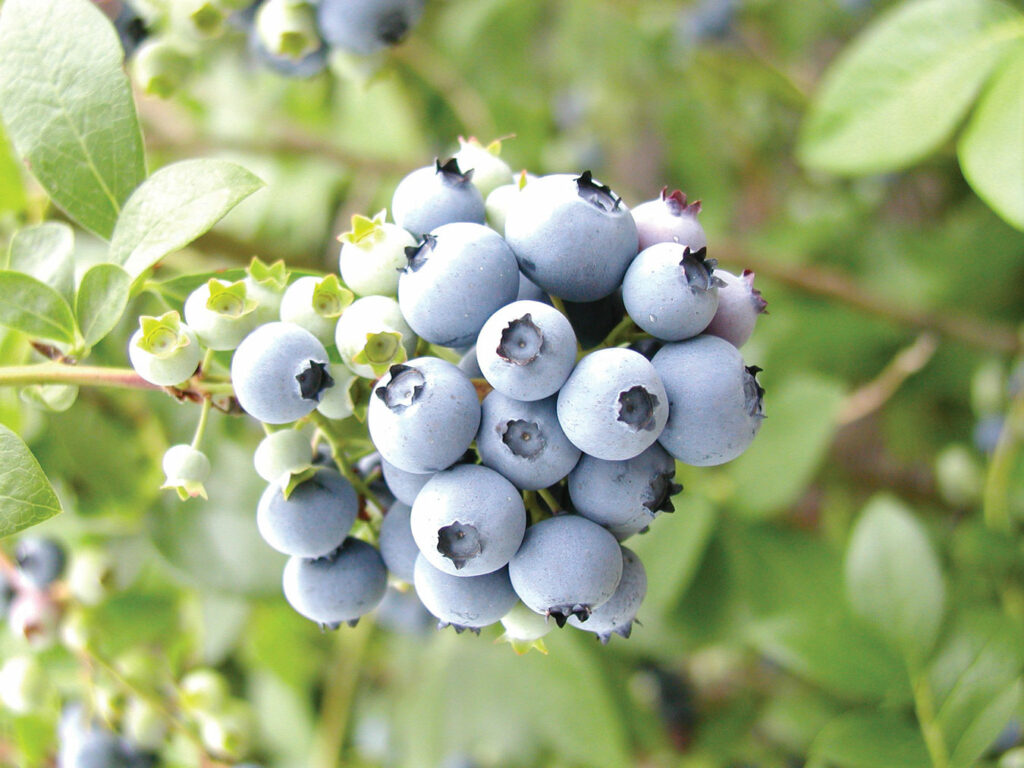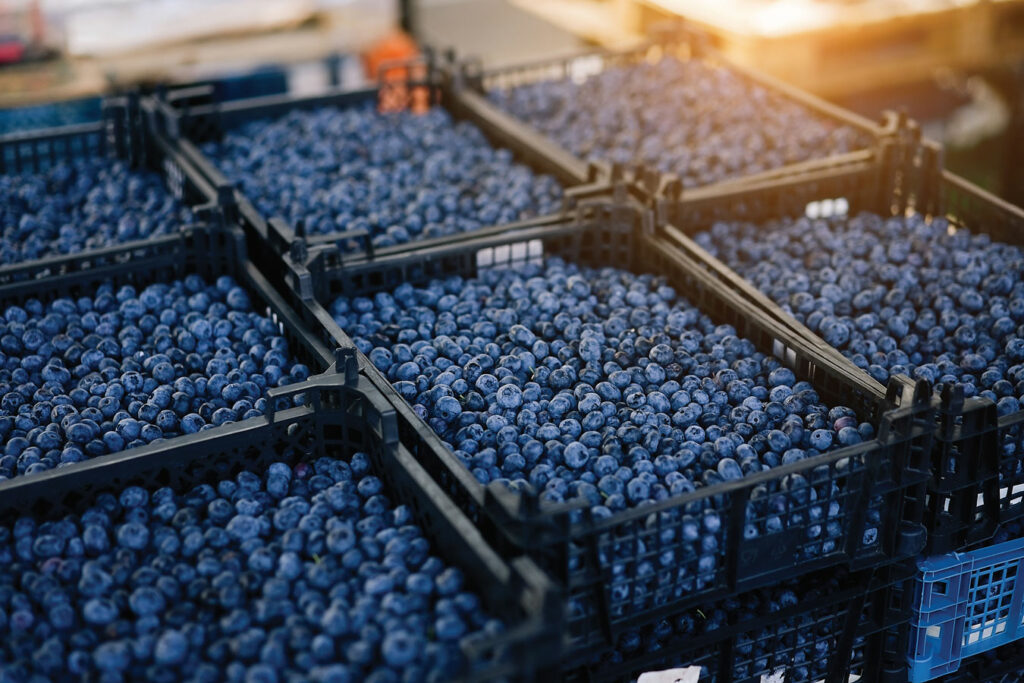Over 13,000 years ago, tiny azure berries were located on leafy bushes and enjoyed by indigenous Americans gathering food. Back then, blueberries were referred to as “star berries” or “star fruit” because of the five-point star that is created on the blossoming end. They were eaten fresh, as well as smoked—in order to keep for the less “fruitful” winter months. The blueberry that we know and love in our pies, muffins, and parfaits has a rich history in our country as one of the few fruits indigenous to North America.
That history continues here in Michigan, which is one of the largest growers in the United States. While final numbers from 2022 are not yet available, our 20,000 bearing acres produce somewhere between 75 and 100 million pounds annually. Those pounds of fresh fruit are grown and harvested on the nearly 600 family-run farms across the state—many of them overseen by third- or fourth-generation growers.
“The generational legacy of blueberry farms in Michigan is pretty impressive,” said Nancy Nyquist, executive director of the Michigan Blueberry Commission. “These growers have such an amazing commitment to the land, their communities, and to this relatively close-knit industry.”
While geographically, the blueberry industry may feel cozy, the impact on our state is far-reaching. Nyquist says blueberries have about a $500 million impact on our state’s economy.
“A half a billion dollars generated from this tiny berry is pretty impressive,” said Nyquist. “Especially because blueberries are only being harvested for a few months out of the year in Michigan.”
While there are blueberry farms across the state, the densest areas of growth are in the southwest part of the Lower Peninsula, where the sandy soil and climate, which are moderated by the lake, produce perfect growing conditions. Of course, there is the hope that conditions will continue to be optimal and that there may be room for growth in the industry.
This is where the Michigan Blueberry Commission comes into place. It helps to leverage funding to support testing, research, and projects that can support the industry. The organization has been able to invest back into the blueberry industry to the tune of $900,000 through research grants. They assess certain challenges like a recent spotted wing drosophila influx, an insect that damages blueberry crops. They then determine how to limit the chemistry that is used to control the pests. Nyquist says the commission is starting to see the results of its efforts.
“The commission was developed to improve the economic position and competitiveness of the Michigan Blueberry industry—and we are doing this by supporting research, education, and promotional programs to ensure that Michigan has the best blueberries,” she said.
While the commission is making efforts to grow the industry, Nyquist notes that blueberry lovers can help as well by reading labels in their local grocery store for Michigan-grown berries, grabbing fresh pints at the farmer’s market, or heading out with friends and family to enjoy a local U-Pick farm.
“We want our blueberry growers to succeed,” said Nyquist. “They go out every day with generations of experience and knowledge, and they put it all on the line because they have a passion and a desire to provide food for the families they serve. They’re proud of their work, and they should be.”







